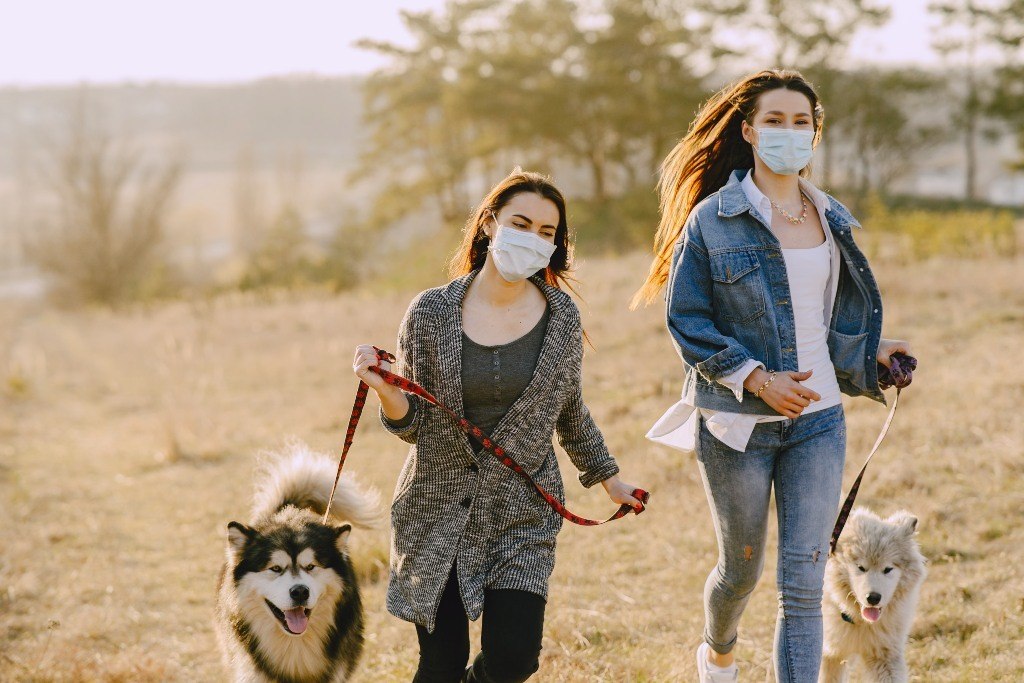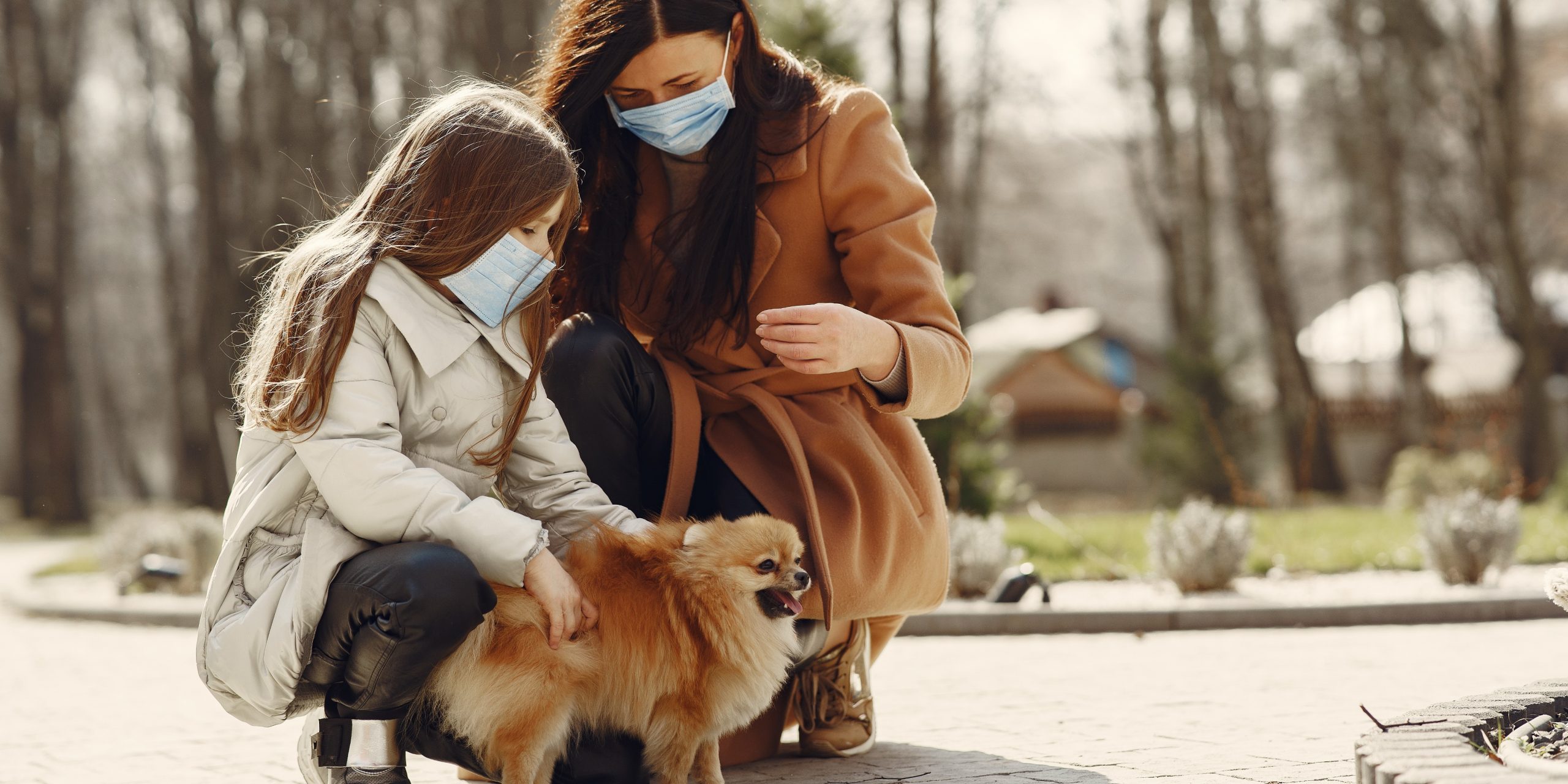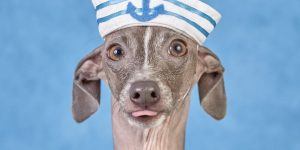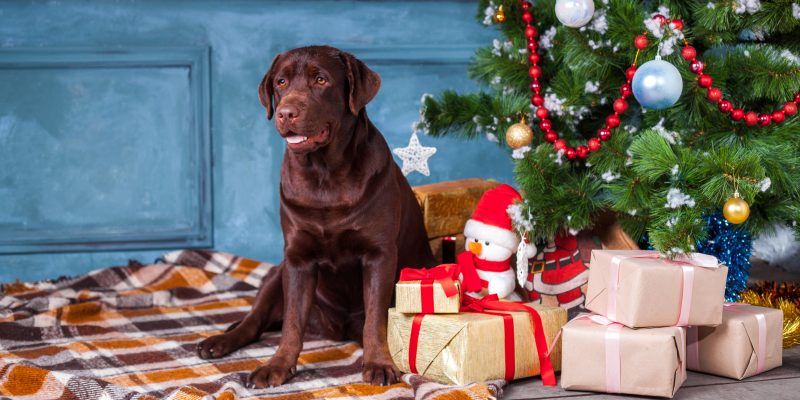This morning I took my dog Stevie on her morning walk. We headed out of our building, across a busy street, through some laneways, to the local park. She saw a few dogs, got a treat when she didn’t lunge at them, sniffed many (many) shrubs, did her business, and then we headed home. It was almost a totally normal morning. The only unusual element was that this morning I was wearing a face mask.
Stevie and I live in Melbourne, where from this week residents will be required to wear face masks when in public. While other Australian cities haven’t brought in the same rule, a lot of people are still choosing to mask up when social distancing isn’t possible.
The benefits of face masks are numerous and widely reported (seriously, wear your mask). But there’s no denying they can pose a few social challenges. Pre-mask I wasn’t aware of how much non-verbal communication I engaged in every day. From smiling at kids, to mouthing “thank you” to shop assistants, and generally trying to seem pleasant when going about our days, we say a lot with our faces without saying anything at all.
This morning though, I discovered something else: dogs and face masks are a tricky combination.
When we walk down the street, Stevie constantly glances up at me for reassurance. As soon as I smile back, she relaxes. But today, she glanced up and instead of seeing a familiar face she saw a black mask. She was clearly unnerved. It struck me that along with learning how to properly put on, remove, and clean my mask, I was going to need to acquire a new skill–communicating with my dog while wearing it.
Dogs and Face Masks, An Introduction
The first time your dog sees you in a mask they may be confused or distressed. If you walk into your home with it on, they could even assume you’re an intruder. To avoid all this, it’s important to get them used to you in your mask.
Begin by covering your face with your hands or a scarf while chatting to them so they know it’s you. Build up the amount of time you engage with them with your face obscured. Reward them with pats and attention so they get used to the idea that just because they can’t fully see you doesn’t mean something is wrong.
Show them your face mask before putting it on. Just be sure they don’t touch it–masks needs to remain as sterile as possible. Put it on in front of them so they know it’s you underneath.
Wear your mask around the house for a bit, carrying on with business as usual, that will signal that the mask doesn’t create any huge change in behaviour or routine.
If possible, try this with different styles of masks. Seeing variations can help them get used to people out of the house wearing masks too.
Remember to go slow and keep up the positive reinforcements.
Watch out for Too Much Eye Contact
Dogs are visual communicators, they pick up information from your facial expressions and body language. In particular, they pay a lot of attention to your eyes and mouth.
With half of that info removed, your eyes will get all of their focus. This may cause issues because direct, intense eye contact can be intimidating to dogs. When all they see is your eyes it’s more likely that you could accidentally appear threatening. Additionally, they’re not able to see if your mouth is relaxed or smiling, which usually might settle them.
Use Your Voice
Dogs might not be able to see your mouth, but they can still hear you. So your voice becomes a vital tool in helping them feel comfortable. Dogs like high pitched, upbeat, friendly voices (yes, basically baby voice). Even if they don’t know what you’re saying, they recognise this as friendly behaviour.
Make an effort to be chattier to your dog while wearing your mask to reassure them that you’re not angry or upset. Everytime you find yourself smiling at them under your mask, make sure you also say “good boy/girl”.

The Power of Treats
Cutting out smiles and other facial expressions means you may need to lean more heavily on other positive reinforcements like treats or pats. We’ve already mentioned that this is a good way to get them used to your mask, but be aware that across the day you’ll need to use pats and nibbles to keep them feeling comfortable. Even if they can’t see your face, they’ll know you’re probably not scowling under there if you’re giving them a scratch.
As always, be mindful of how much your dog is snacking. The last thing they need is to have to go on a diet on top of everything else.
Other People’s Dogs and Face Masks
When it’s your dog, you can take the time to get them used to you in a mask. But things are tricker when you meet a dog on the street or run into a friend and their pet. Without time to build trust it’s important to adapt your behaviour to give them a bit of extra space.
Move slowly, speak quietly, and avoid intense eye contact. Blinking and looking away can also communicate that you’re not a threat. Avoid the urge to rush in for a pat, let them come to you first and set their own pace for the interaction.
For more on COVID-19 and dogs:
Can I Pat Other People’s Dogs While Social Distancing?
Make the Most of Social Distancing with Your Dog
Everyone Is Adopting a Dog Right Now
What You Need to Know about Dogs and Coronavirus
While you’re here, subscribe to our newsletter, check out our magazine, and follow us on Instagram, Facebook, and Twitter.







